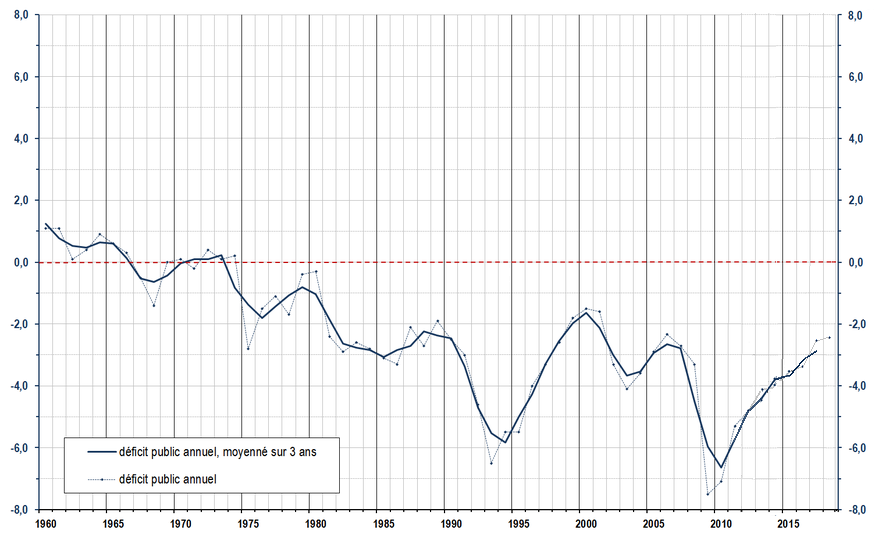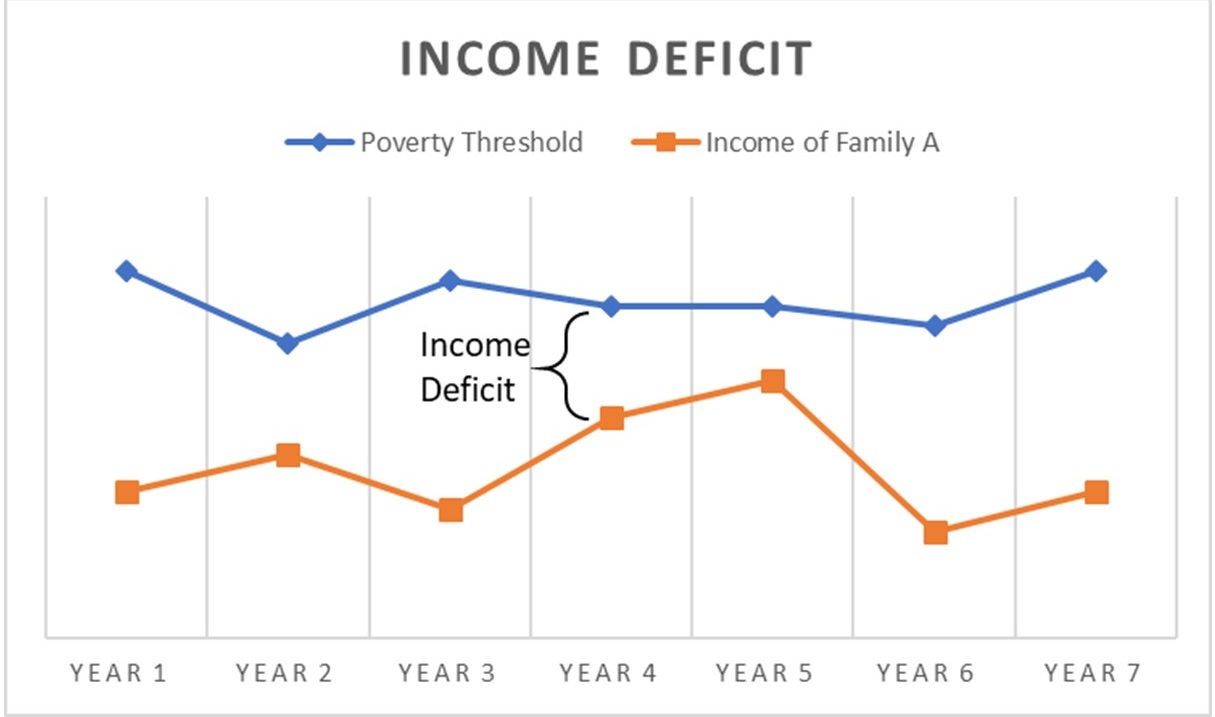|
Deficit (economics) with a n ...
In economics, deficit is the excess of an organization's expenditure over its revenue, such as in: * Deficit spending, the amount by which spending exceeds revenue * Government deficit spending: a negative government budget balance; fiscal deficit of that year= total borrowing by government ** Primary deficit, the pure deficit derived after deducting the interest payments ** Structural and cyclical deficit, parts of the public sector deficit * Income deficit, the difference between family income and the poverty threshold * Trade deficit, when the value of imports exceed the value of exports; a negative balance of trade See also * Balance of payments deficit, when the balance of payments is negative * Equity (finance) In finance, equity is an ownership interest in property that may be subject to debts or other liabilities. Equity is measured for accounting purposes by subtracting liabilities from the value of the assets owned. For example, if someone owns a ... [...More Info...] [...Related Items...] OR: [Wikipedia] [Google] [Baidu] |
Economics
Economics () is a behavioral science that studies the Production (economics), production, distribution (economics), distribution, and Consumption (economics), consumption of goods and services. Economics focuses on the behaviour and interactions of Agent (economics), economic agents and how economy, economies work. Microeconomics analyses what is viewed as basic elements within economy, economies, including individual agents and market (economics), markets, their interactions, and the outcomes of interactions. Individual agents may include, for example, households, firms, buyers, and sellers. Macroeconomics analyses economies as systems where production, distribution, consumption, savings, and Expenditure, investment expenditure interact; and the factors of production affecting them, such as: Labour (human activity), labour, Capital (economics), capital, Land (economics), land, and Entrepreneurship, enterprise, inflation, economic growth, and public policies that impact gloss ... [...More Info...] [...Related Items...] OR: [Wikipedia] [Google] [Baidu] |
Deficit Spending
Within the budgetary process, deficit spending is the amount by which spending exceeds revenue over a particular period of time, also called simply deficit, or budget deficit, the opposite of budget surplus. The term may be applied to the budget of a government, private company, or individual. A central point of controversy in economics, government deficit spending was first identified as a necessary economic tool by John Maynard Keynes in the wake of the Great Depression. Controversy Government deficit spending is a central point of controversy in economics, with prominent economists holding differing views. The mainstream economics position is that deficit spending is desirable and necessary as part of countercyclical fiscal policy, but that there should not be a structural deficit (i.e., permanent deficit): The government should run deficits during recessions to compensate for the shortfall in aggregate demand, but should run surpluses in boom times so that there is no ... [...More Info...] [...Related Items...] OR: [Wikipedia] [Google] [Baidu] |
Government Budget Balance
The government budget balance, also referred to as the general government balance, public budget balance, or public fiscal balance, is the difference between government revenues and spending. For a government that uses accrual accounting (rather than cash accounting) the budget balance is calculated using only spending on current operations, with expenditure on new capital assets excluded. A positive balance is called a ''government budget surplus'', and a negative balance is a ''government budget deficit''. A government budget presents the government's proposed revenues and spending for a financial year. The government budget balance can be broken down into the ''primary balance'' and interest payments on accumulated government debt; the two together give the budget balance. Furthermore, the budget balance can be broken down into the ''structural balance'' (also known as ''cyclically-adjusted balance'') and the cyclical component: the structural budget balance attempts ... [...More Info...] [...Related Items...] OR: [Wikipedia] [Google] [Baidu] |
Primary Deficit
The government budget balance, also referred to as the general government balance, public budget balance, or public fiscal balance, is the difference between government revenues and spending. For a government that uses accrual accounting (rather than cash accounting) the budget balance is calculated using only spending on current operations, with expenditure on new capital assets excluded. A positive balance is called a ''government budget surplus'', and a negative balance is a ''government budget deficit''. A government budget presents the government's proposed revenues and spending for a financial year. The government budget balance can be broken down into the ''primary balance'' and interest payments on accumulated government debt; the two together give the budget balance. Furthermore, the budget balance can be broken down into the ''structural balance'' (also known as ''cyclically-adjusted balance'') and the cyclical component: the structural budget balance attempts to ... [...More Info...] [...Related Items...] OR: [Wikipedia] [Google] [Baidu] |
Structural And Cyclical Deficit
A structure is an arrangement and organization of interrelated elements in a material object or system, or the object or system so organized. Material structures include man-made objects such as buildings and machines and natural objects such as biological organisms, minerals and chemicals. Abstract structures include data structures in computer science and musical form. Types of structure include a hierarchy (a cascade of one-to-many relationships), a network featuring many-to-many links, or a lattice featuring connections between components that are neighbors in space. Load-bearing Buildings, aircraft, skeletons, anthills, beaver dams, bridges and salt domes are all examples of load-bearing structures. The results of construction are divided into buildings and non-building structures, and make up the infrastructure of a human society. Built structures are broadly divided by their varying design approaches and standards, into categories including building structures, arc ... [...More Info...] [...Related Items...] OR: [Wikipedia] [Google] [Baidu] |
Income Deficit
Income deficit is the difference between a single person or family's income and its poverty threshold or poverty line, when the former is exceeded by the latter. Data on the income deficits of various members of a population allow for the construction of one type of measurement of income inequality in that population. Individuals or families that fall below the line are considered to be in poverty whereas families that fall above are not. The income deficit is one of two measures that are used to determine a person or family's income distance from the poverty threshold, the other being a ratio rather than a difference. The net income deficit consists largely of income payments and receipts on capital, as well as cross-border labour income (compensation of employees). Given the relatively small level of net cross-border labor income payments, there are two key drivers of the net income deficit: the level of net foreign liabilities being financed and the yield on those liabilities.htt ... [...More Info...] [...Related Items...] OR: [Wikipedia] [Google] [Baidu] |
Balance Of Trade
Balance of trade is the difference between the monetary value of a nation's exports and imports of goods over a certain time period. Sometimes, trade in Service (economics), services is also included in the balance of trade but the official IMF definition only considers goods. The balance of trade measures a flow variable of exports and imports over a given period of time. The notion of the balance of trade does not mean that exports and imports are "in balance" with each other. If a country exports a greater value than it imports, it has a trade surplus or positive trade balance, and conversely, if a country imports a greater value than it exports, it has a trade deficit or negative trade balance. As of 2016, List of countries by net exports, about 60 out of 200 countries have a trade surplus. The idea that a trade deficit is detrimental to a nation's economy is often rejected by modern trade experts and economists. Explanation The balance of trade forms part of the Current ... [...More Info...] [...Related Items...] OR: [Wikipedia] [Google] [Baidu] |
Balance Of Payments
In international economics, the balance of payments (also known as balance of international payments and abbreviated BOP or BoP) of a country is the difference between all money flowing into the country in a particular period of time (e.g., a quarter or a year) and the outflow of money to the rest of the world. In other words, it is economic transactions between countries during a period of time. These financial transactions are made by individuals, firms and government bodies to compare receipts and payments arising out of trade of goods and services. The balance of payments consists of three primary components: the current account, the financial account, and the capital account. The current account reflects a country's net income, while the financial account reflects the net change in ownership of national assets. The capital account reflects a part that has little effect on the total, and represents the sum of unilateral capital account transfers, and the acquisitions and ... [...More Info...] [...Related Items...] OR: [Wikipedia] [Google] [Baidu] |




